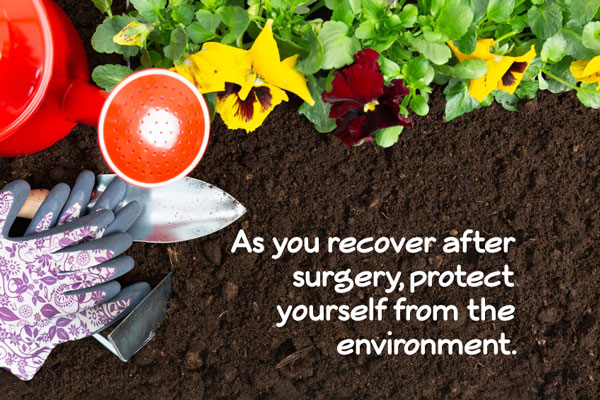Everything You Need to Know about Stem Cell Transplant and Fungal Infections
As a cancer survivor, you may have received a lot of information about your treatment and your journey to recovery. Chemotherapy and radiation cause many changes in the body as they destroy cancer cells. One major change is that these treatments weaken your immune system, which can increase your chances of getting an infection, including a fungal infection.
Stem cell transplant recipients or those who have a blood cancer, such as leukemia, lymphoma, or myeloma may have different risks for fungal infections. Because stem cell transplants destroy and rebuild your immune system, they increase your risk for fungal infections. Here’s what you need to know about fungal infections:
- A transplant using stem cells from a donor increases your risk for fungal infection more than a transplant that uses stem cells from your own body. If your stem cells come from another person, you will need to take anti-rejection medication. This medication weakens your immune system.
- Chemotherapy and radiation lower your white blood cell count. As you recover from your transplant, your white blood cell count can become very low, also known as neutropenia. During this time, your body will have trouble fighting infections, including fungal infections.
- Graft-versus-host disease increases your risk of infection. If you receive stem cells from a donor, the transplanted stem cells may attack your body. This is known as graft-versus-host disease, which can increase your risk for fungal infection. The steroid medications given to treat graft-versus-host disease can also increase the chance of getting a fungal infection.
- Fungal infections can range from mild to life-threatening. Some fungal infections are mild skin rashes, but others can be deadly, like fungal pneumonia. Because of this, it’s important to seek treatment as soon as possible to try to avoid serious infection.
- Fungal infections can look like bacterial or viral infections. If you’re taking medicine to fight an infection and you aren’t getting better, ask your doctor about testing you for a fungal infection.
- Fungal infections can happen any time after your transplant. Fungal infections can happen days, weeks, or months after the stem cell transplant. If you develop graft-versus-host disease, you’re at risk for a longer period of time.
- Some types of fungal infections are more common than others in stem cell transplant recipients. Aspergillosis is the most common type of fungal infection in stem cell transplant recipients, followed by Candida infection and mucormycosis, but other types of fungal infections are also possible.
- Your hospital stay matters. After your transplant, you may need to stay in the hospital for a long time. While there, you may need to have procedures that can increase your chance of getting a fungal infection.
- Where you live (geography) matters. Some disease-causing fungi are more common in certain parts of the world. If you live in or visit these areas, you may be more likely to get these infections than the general population.
- Indoor mold can cause fungal infections. As a transplant recipient, you may be at higher risk for getting sick from indoor mold.
Preventing Fungal Infections
Fungi are difficult to avoid because they are a natural part of the environment. Fungi live outdoors in soil, on plants, on trees, and on other vegetation. They are also on many indoor surfaces and on your skin. However, there may be some ways for you to lower the chances of getting a serious fungal infection.
- Learn about fungal infections. There are different types of fungal infections. Learning about them can help you and your healthcare provider recognize the symptoms early, which may prevent serious illness.
- Get additional medical care if necessary. Fungal infections often resemble other illnesses. Visiting your healthcare provider may help with faster diagnosis and may prevent serious illness.
- Testing for early infection can help lower your risk for some types of fungal infection. Some people may benefit from blood tests to detect fungal infections like aspergillosis before symptoms appear. Talk to your doctor to determine if this type of test is right for you.
- You may need antifungal medication. Your healthcare provider may prescribe medication to prevent fungal infections. Scientists are still learning about which transplant recipients are at highest risk and how to best prevent fungal infections.
- Protect yourself from the environment. As you recover after surgery and start doing your normal activities again, there may be some ways to lower your chances of getting a serious fungal infection by trying to avoid disease-causing fungi in the environment. Try to avoid areas with a lot of dust, like construction or excavation sites. You should also stay inside during dust storms. Keep away from areas with bird and bat droppings, including places like chicken coops and caves. Wear gloves when handling materials such as soil, moss, or manure. And wear shoes, long pants, and a long-sleeved shirt when doing outdoor activities like gardening, yard work, or visiting wooded areas. It’s important to note that although these actions are recommended, they have not been proven to prevent fungal infections.
Source: U.S. Centers for Disease Control and Prevention
This article was published in Coping® with Cancer magazine, May/June 2021.


